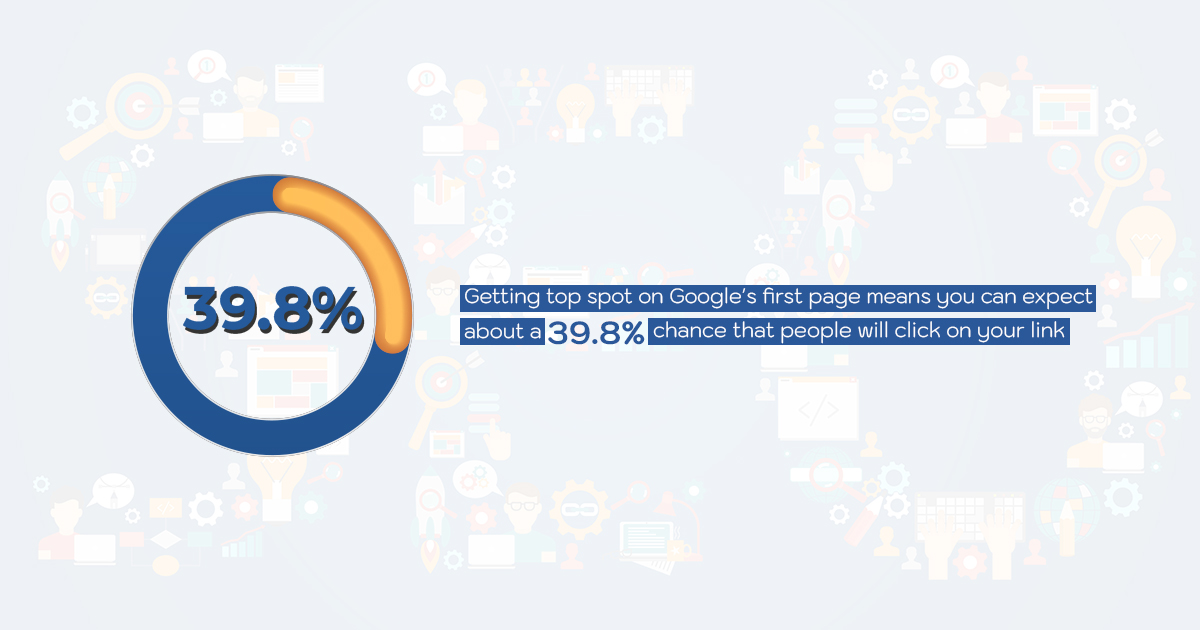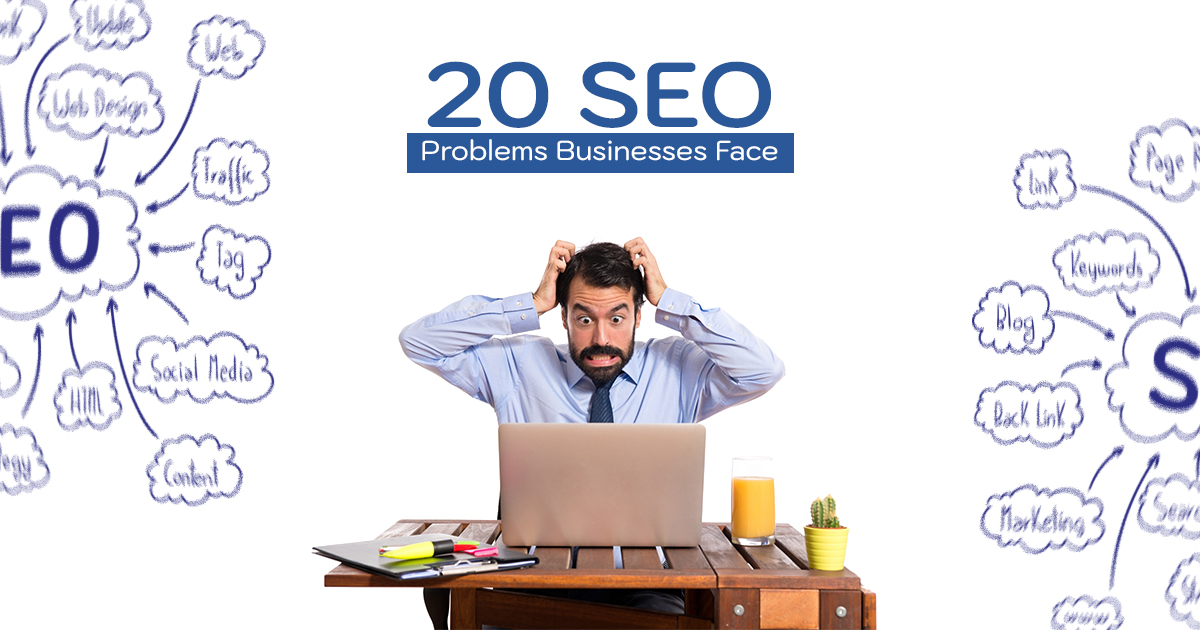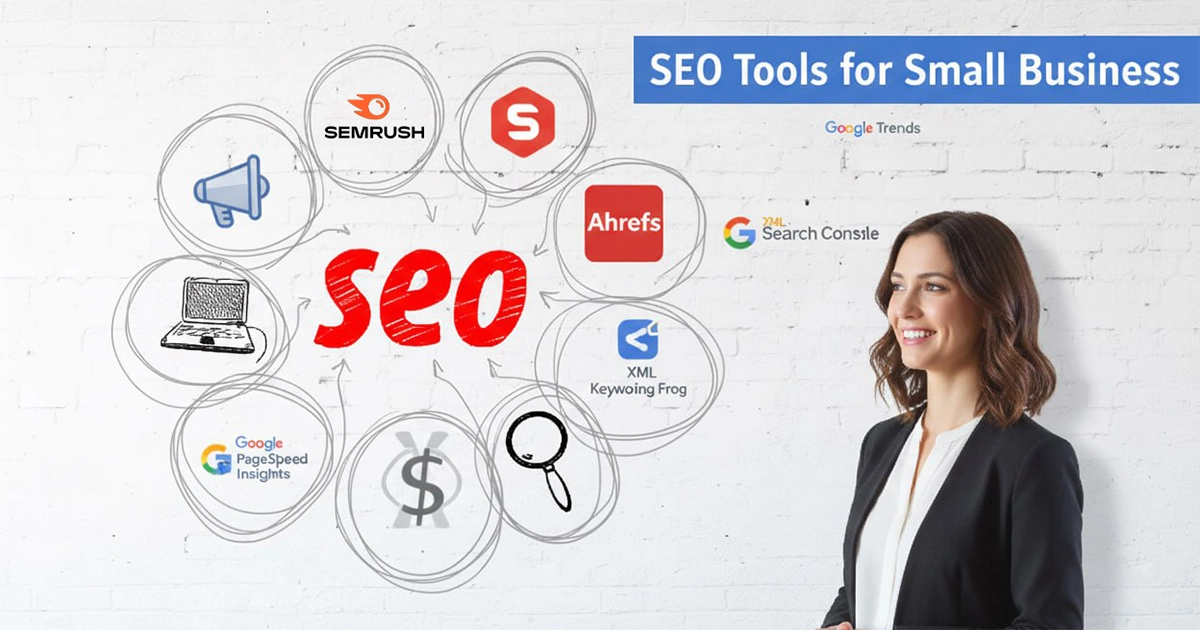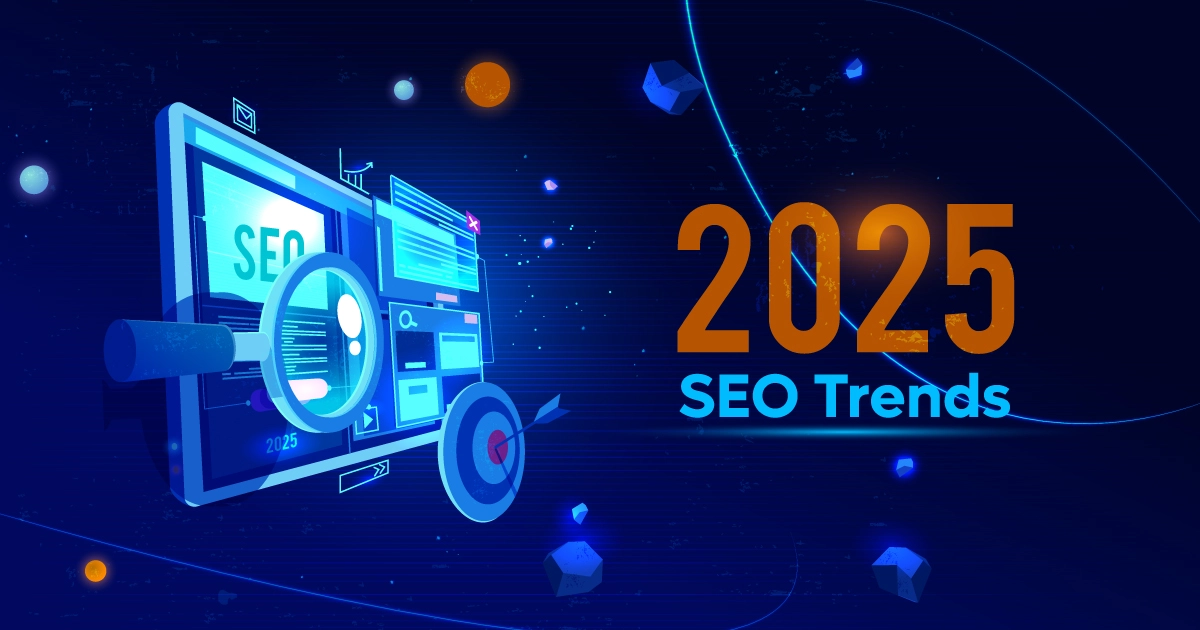Most businesses think the SEO problem they are facing is just Google’s algorithm. But that isn’t the case. You will see some hidden technical glitches, misaligned strategies, and communication breakdowns.
Technical SEO Gaps | Content Problems | Strategy Gaps | Human Communication Gap |
|
|
|
|
So, now you know you have to invest in better SEO services. Yes, you won’t see overnight miracles. Therefore, ignore it for six months and watch your traffic vanish.
Relatable Reads: 16 Effective SEO Trends in 2025 for dominating SERPs
Why Does Good SEO Feel Invisible?

All of a sudden, the SEO efforts are going to be in vain. Well, you aren’t alone. Many businesses face common SEO issues that make their hard work feel. Literally, close to invisible
What Makes SEO So Hard to See?
Unlike flashy ads that bring instant clicks, search engine optimization issues work differently. SEO builds quietly in the background. It is similar to planting seeds that grow over months, not days. This slow burn confuses many business owners who expect quick wins.
The Visibility Trap
Here’s a common SEO mistake to avoid: judging success only by rankings. We know, appearing on SERP feels great. However, the actual results show in analytics. Traffic quality, conversion rates, and user behavior tell the true story.
Common content SEO mistakes include:
- All the attention on keyword rankings
- Ignoring user engagement metrics
- Missing the connection between traffic and revenue
The Education Gap
Most SEO issues start from a simple problem. Clients mentioned agencies don’t explain what success actually looks like. They throw around terms like “domain authority” without showing you the money trail.
When you check SEO problems, look beyond surface metrics. Are visitors staying longer? Bouncing less? Converting more? That’s your ROI.
Check out: Core SEO Principles to Increase Traffic Like Crazy
20 Hidden SEO Problems That Make It Seem Like SEO Isn’t Working

You are going after the ranking, updating content, but nothing is working. The reason is that you are solving the surface-level stuff. There are bigger SEO issues that are going unseen.
Here are 20 hidden problems spread over 4 different categories.
Technical SEO Gaps (The Silent Site Killers)
These search engine optimization issues lurk in your website’s foundation. It is invisible to visitors but painfully obvious to search engines.
01: Why does my website load fast but still rank low?
Speed isn’t everything, always. Google measures user experience beyond simple load time.
Key issues to check:
- Cumulative Layout Shift (CLS) is causing jumpy pages
- First Input Delay (FID) makes buttons feel slow and unresponsive
- Largest Contentful Paint (LCP) pauses your main content
Try: Run a PageSpeed Insights audit. Check SEO problems beyond basic speed.
02: What broken links and redirect loops do to your credibility
Broken links are seen as a dead end. It makes the users frustrated and wastes Google’s crawl budget. Redirect loops? Even worse. They trap search bots in endless circles.
Try: You can try tools like Screaming Frog. It will spot these SEO issues. You can use it before the ranking goes down. You have to fix these issues monthly.
03: How poor mobile structure kills your organic traffic silently
Now most of the traffic comes from phones. If the site isn’t mobile-friendly, you’re probably losing visitors.
Common mobile SEO mistakes:
- Text too small to read without zooming
- Buttons placed too close together
- Pop-ups that cover the entire screen
Try: Test every page on an actual phone. Shopify SEO problems often start here; it looks great on desktop, but fails on mobile.
04: Why your sitemap and robots.txt may be fighting your SEO strategy
Your sitemap tells Google what to index. Your robots.txt tells Google what to ignore. When these two overlap, it creates the issue. You can think of it like finding your way with a GPS. But it is arguing with your paper map.
Try: See if the pages in robot.txt are blocked. You have to pay extra attention when listing them in your sitemap.
05: The unseen issue of duplicate metadata confuses Google
The identity crisis starts when there are multiple duplicate title tags and meta descriptions. This confuses Google. It doesn’t know which page to rank for what keyword.
Try: Use SEO audit tools to find pages sharing identical metadata, then make each one unique and purposeful.
Content Problems (The “Invisible” Keyword Trap)
Content SEO problems are sneaky. Your articles might look perfect, but still fail to rank or convert.
06: Why keyword stuffing still silently kills your rankings
Another common content SEO mistake. This happens because you are obsessing over keyword density. Even till now, many are doing it unintentionally. Google’s algorithms spot this instantly.
Signs you’re overdoing it:
- Your writing feels like a Robot talking in repetitive phrases.
- Keywords appear where they don’t naturally fit
- You’re forcing exact-match phrases awkwardly
Try: Write naturally first, then sprinkle keywords where they make sense.
07: What happens when your blog attracts traffic but not buyers
If visitors bounce after five seconds, something’s wrong. You might be ranking for informational keywords when you need transactional ones. Lots of visitors, zero sales.
Try: Match your content intent to your business goals.
08: Why Google ignores your “optimized” articles
Google doesn’t just rank individual pages anymore. It evaluates your entire site’s expertise on a topic.
Build topical authority by:
- Creating content clusters around core themes
- Linking related articles together internally
- Showing depth, not just breadth
Try: Create easy-to-follow guides on key topics, link them together, and provide straight answers to people’s questions.
09: The hidden issue of thin content that looks full but lacks intent
A 1,500-word article sounds substantial, but if it’s full of fluff. Generic statements, obvious facts, repeated points. Google sees right through it. Length doesn’t equal quality.
Try: Answer the actual question or face this persistent SEO issue.
10: Why ignoring semantic search keeps your site invisible in 2025
Google understands context and meaning. If your content only uses one exact phrase without related terms, you’re missing the semantic web.
For example, an article about “running shoes” should naturally include terms like:
- Athletic footwear
- Jogging sneakers
- Marathon training gear
- Cushioning and support
Try: Write like a human. Use keywords in a natural language.
Also reads: Topical Relevance: What & How It Improves SEO Ranking
Strategy Gaps (When SEO Has No Roadmap)
Sometimes the problem isn’t technical or content-based; it’s strategic. These SEO problems happen when there’s no clear plan.
11: Why businesses still chase rankings instead of ROI
One of the biggest common SEO issues is obsessing over vanity metrics. The goal is revenue. A site ranking #3 with high conversion rates beats a #1 site with no sales every time.
Try: Track what matters: qualified traffic, leads, and actual dollars earned.
12: What happens when SEO goals don’t align with business goals
Your SEO team focuses on blog traffic. Your sales team needs qualified B2B leads. When these goals don’t sync up, everyone feels like SEO isn’t working.
This common SEO mistake causes:
- Wasted content budgets on the wrong topics
- Frustration between marketing and sales teams
- Reports that look good but don’t move the needle
Try: Align SEO strategy with business objectives from day one.
13: The silent problem of inconsistent brand signals across platforms
Your website says one thing. Your Google Business Profile says something else. Google notices these inconsistencies and questions your legitimacy.
Common local SEO mistakes include:
- Different business names across listings
- Mismatched addresses or phone numbers
- Varying service descriptions
Try: Keep the consistency across every platform.
14: Why your backlink strategy may be hurting instead of helping
Not all backlinks help. Links from spammy directories, irrelevant sites, or link farms can actually trigger Google penalties.
Try: Use Google Search Console to spot and disavow harmful links. It’s a critical step to check SEO problems in your backlink profile.
15: What monthly reports don’t tell you about actual growth
Those beautiful charts showing ranking improvements? They might hide the fact that traffic dropped or conversions stalled. Pretty graphs don’t pay bills. Real growth metrics do.
Demand reports that show:
- Revenue attributed to organic search
- Lead quality, not just quantity
- Year-over-year growth trends
Human and Communication Gaps
Human interaction can kill SEO execution even when the strategy is solid.
16: Why poor communication between teams kills SEO execution
Your SEO specialist says, “Don’t change that URL structure.” Your developer rebuilds the site anyway. Now you have 500 broken pages and a traffic nosedive.
This common SEO problem happens when:
- Teams work in silos without coordination
- Decisions are made without consulting the SEO impact
- Nobody documents why certain elements exist
Try: Bridge the communication gap or watch good SEO work.
17: How the lack of SEO education makes decision-makers undervalue results
When leadership doesn’t really get how SEO works, they end up judging it by the wrong measures.
Common SEO mistakes to avoid:
- Comparing SEO to instant-results channels like paid ads
- Cutting budgets before results have time to compound
- Expecting overnight wins from long-term strategies
Try: Educate stakeholders on realistic expectations.
18: Why agencies that over-promise and under-explain lose client trust
“We’ll get you to #1 in 30 days guaranteed!” These promises shattered trust. When reality doesn’t match the hype, clients assume SEO doesn’t work.
Good agencies explain:
- What’s realistic given your budget and competition
- Why do certain tactics take time to show results
- How they measure success beyond rankings
19: What happens when no one owns the SEO process internally
You hired an agency, so SEO is handled, right? Not quite. Without someone who understands the strategy, SEO problems multiply.
Tasks fall through cracks:
- Content sits in draft forever because nobody approves it
- Technical fixes get deprioritized by busy developers
- Strategy pivots when someone should maintain course
Try: Assign an SEO champion internally, even if you outsource execution.
20: Why “cheap SEO” often becomes the most expensive mistake
Cheap SEO packages with automated spam tactics trigger Google penalties. Recovering from a penalty costs 10x more than doing SEO right from the start.
This common SEO issue includes:
- Buying low-quality backlinks in bulk
- Using content farms instead of real writers
- Ignoring Google’s guidelines to cut corners
Try: Quality SEO is an investment that compounds. Choose wisely, or prepare to start over from scratch after Google drops the hammer.
Relatable reads: Digital Marketing Trends 2025 – All You Need to Know
How to Make Your SEO Visible (And Feel Its Impact)

You’ve avoided the common SEO mistakes. The traffic’s there, maybe rankings improved. Yet nobody sees the real impact. Here’s how to change that.
Show Performance Through Keyword Intent Tracking
Stop tracking rankings alone. Focus on why people search and what they do after landing.
Track these three intent types:
- Informational (“how to fix Shopify SEO problems”): Brings traffic, rarely immediate sales
- Navigational (brand searches): Shows brand strength
- Transactional (“buy running shoes online”): Drives revenue
Set up Google Analytics to segment traffic by keyword intent. Create custom reports showing:
- Which intent type brings the most conversions
- How long does each type take to convert
- Where people drop off in your funnel
Measure Conversions From Organic Sources
Connect traffic to business outcomes that matter:
- For e-commerce: Revenue from organic search, product conversions, and add-to-cart rates
- For lead generation: Form submissions, demo requests, lead quality scores
- For content sites: Email signups, engagement metrics, returning visitors
Connect SEO to Sales Funnels and ROI Dashboards
Build a simple dashboard showing:
- Organic sessions and new users
- Engagement rates and time on site
- Conversions and revenue from organic traffic
- The money metric: ROI = (Revenue from organic – SEO investment) / SEO investment × 100
Use Before/After Visibility Reports
Create visual proof clients can’t ignore. Here is a small example.
Side-by-side comparisons:
- Before: 500 impressions, 25 clicks monthly
- After: 10,000 impressions, 850 clicks monthly
Revenue screenshots:
- Before: $1,200 monthly from organic
- After: $11,500 monthly from organic
The Takeaway
Start by auditing your site for these 20 problems. You’ll likely find a few quietly sabotaging results. Fix them, and SEO stops feeling invisible.
If it’s too much for you, let NextBell handle it. We have some of the best SEO experts who know how to bring visibility. Get in touch with us for a free consultation. We will deliver the growth you’ve been chasing all along.
Good SEO is all about user experience, quality content, and sustainable ranking strategies. However, the bad SEO includes keyword stuffing, spammy backlinks, and manipulative tactics.
It means how visible a website is in search engine results. The percentage of potential clicks your site receives based on its keyword rankings.
The biggest mistake is focusing only on rankings. Instead, work on user intent, content quality, and website experience.
A good SEO visibility score generally falls between 30% and 50% for strong-performing sites.
Good SEO shows consistent organic traffic growth. You will see better keyword rankings, higher engagement, and improved conversions.



